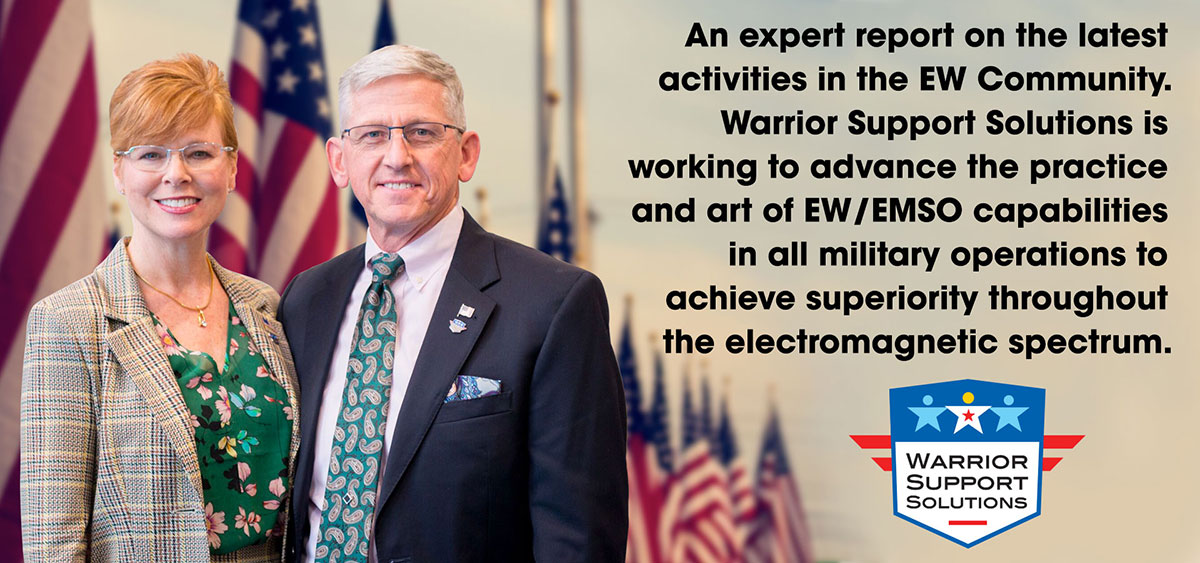
To all of our valued EW/EMSO colleagues:
Without question, the news of the day is the COVID-19 pandemic and our country’s (and world’s) response to this event. While civilians and citizens alike are battling the effects of this virus literally in our homes and communities, our troops and public servants are taking it one step further by balancing their duties with managing the virus’ spread. Warfighters, medical personnel, emergency responders, grocers and delivery personnel, are being asked to lead in this trying time by maintaining level heads, calm demeanors, and “staying at their posts.” They will make a bigger sacrifice by continuing their duties and potentially getting in harm’s way by taking additional risks around exposure to the virus.
If our responsibilities to stay home and go without common comforts becomes challenging, let’s stop to remember that many are making bigger sacrifices than we in order to keep America properly cared for. The virus may have slipped through, but there are still bigger threats out there. We still live in the best country in the world and let’s celebrate that in the midst of our challenge. Let’s learn from this event, recording Lessons Learned and using them to improve our operations if we are called to do this again. It is in this vein that we make a silver lining out of the dark cloud.
Sincerely Yours in the EME,
Charlie and Tango
P.S. Check out our “WSS News to Cheer About” at the bottom of this newsletter to read about Tango’s Civil Air Patrol mission to assist with COVID-19 challenges.

The Requirements Game: Chutes and Ladders, or maybe just Shoots (as in Darn!)
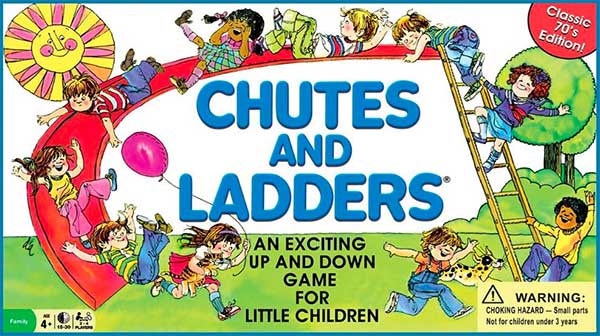 We know our defense industry partners are eager to have any information about upcoming requirements and potential RFPs/RFIs/Sources Sought/BAAs that will garner those requirements into systems and technologies to help win the war in the spectrum. While we cannot share specifics with you, we thought you might glean some comfort from knowing a little bit about the Requirements process and why – despite the need – we haven’t seen a lot of procurement opportunities get into Beta.SAM.gov. It isn’t that the Services don’t need EW capabilities; they just are juggling multiple priorities and are eager for the EW EXCOM and OSD’s EMSO CFT to organize around a potential Purple Force/Joint Force construct that will oversee this critical capability. In the meantime, consider this:
We know our defense industry partners are eager to have any information about upcoming requirements and potential RFPs/RFIs/Sources Sought/BAAs that will garner those requirements into systems and technologies to help win the war in the spectrum. While we cannot share specifics with you, we thought you might glean some comfort from knowing a little bit about the Requirements process and why – despite the need – we haven’t seen a lot of procurement opportunities get into Beta.SAM.gov. It isn’t that the Services don’t need EW capabilities; they just are juggling multiple priorities and are eager for the EW EXCOM and OSD’s EMSO CFT to organize around a potential Purple Force/Joint Force construct that will oversee this critical capability. In the meantime, consider this:
Writing requirements for DoD-5000 series acquisition programs is quite a complicated task. First of all, experts are needed to write requirements. Over the last 30 years, the DoD turned over a great deal of its technical expertise to contractors. The Cold War was over, so it became imprudent to spend dwindling DoD budgets on technical talent that could be harvested from industry. Therefore, the DoD doesn’t have a lot of active, technical billets filled with qualified staff to write requirements. Next, there is the matter of interpreting Acquisition Fiscal Law. The USAF has deemed that Sustainment dollars can only be used to keep a system “Form, Fit & Functioning.” The Navy and Army had a different interpretation, so they are moving out with upgrading their EMSO systems. The Air Force, however, is held back with this ruling. Here’s why: EW/EMSO requirements for airborne platforms were written “long ago” (in some cases, like the B-52, over 55 years ago!). They were written against static threats and they were written like requirements for landing gear and tires. Now that threats are evolving, the requirements for these platforms need to be rewritten. Now we are back to square one: no DoD personnel available to write requirements.
Even if there were DoD engineers to write requirements, there are a host of other challenges. To follow DoD-5000 to the letter, requirements need to be crafted so as to avoid risk and misinterpretation of what is wanted. There is an “old school” approach to writing requirements centered on addressing parochial features like power levels and frequencies. It will take a culture change to ensure that people writing new requirements have the skills and education to reflect the intent of defeating the threat, not just the physical parameters.
If there were the expertise available, the priority isn’t there. EW and EMSO falls third after nuclear deterrence and space defense. Even if it fell first, it would take three years for the POM process to ferry the request into the budget and make way for writing new requirements and then awarding them into a formal acquisition program. By then, the request would be obsolete. In addition, while A5L is getting stood up, the major commands are waiting and hoping that funding will be culled from a bucket other than their own (this would actually be prudent as it would potentially avoid duplication of effort and speed innovation toward useful and transferable capabilities). In the meantime, with the absence of any tangible EW/EMSO threat activity from our peer adversaries, it is difficult to incentivize the major commands to spend their limited budgets on these requirements. Then there is the matter of the Color of Money. As mentioned earlier, Sustainment dollars cannot be used to make USAF EW/EMSO capabilities effective for the current fight. They can only be used to manage things like EOL and DMS issues, so as to keep the systems functioning. It really isn’t prudent to sustain a Cold War-era radar jammer to defend against a Cold War-era surface-to-air missile, so those systems aren’t getting upgraded. The AF sustainment community isn’t responsible for writing requirements for the platforms, so the entire process remains at a stalemate. The USAF has the most systems with the most need for EW and EMSO capabilities, so we hope this situation will change soon. In the meantime, please stand by…
At New Horizons a few weeks ago, I heard the Assistant Secretary for Acquisition say that DoD-5000 has been entirely rewritten and now it fits into 17 pages rather than the thousands it has been for decades. Let’s hope this reform penetrates the acquisition community quickly, enabling it to write requirements that morph and mature with rapidly evolving threats. If this combines readily with the establishment of a joint entity for EMS Superiority that has the “Big Three”: authority, responsibility, and budget – it could make for a grand celebration of purchasing, investing, developing, and deploying EW and EMSO capabilities throughout the DoD. Game On…
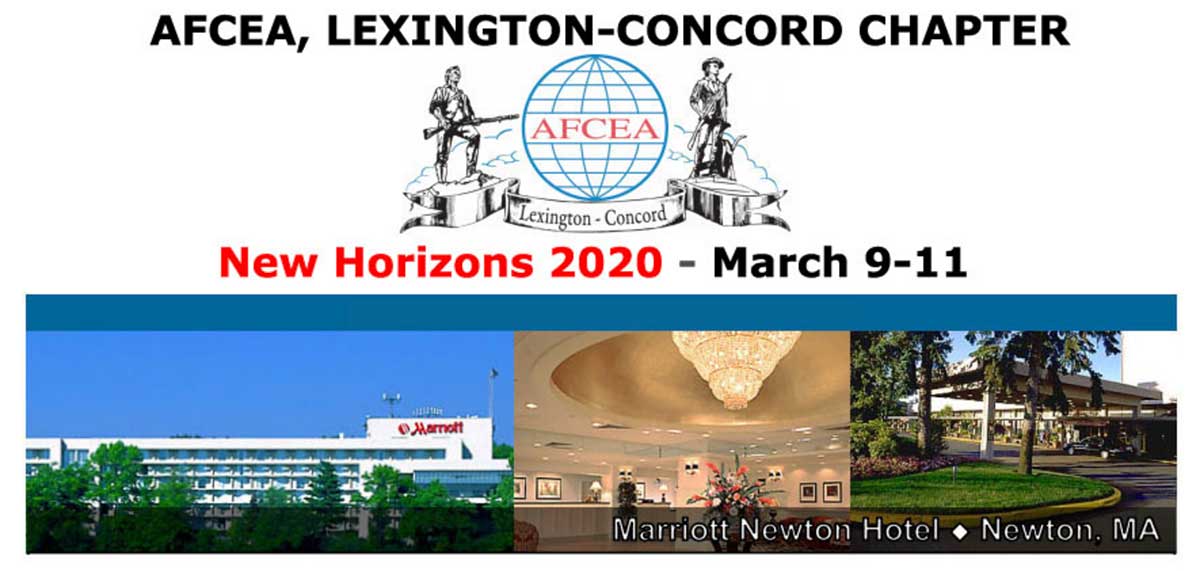 AFCEA BOSTON New Horizons – Hanscom AFB Industry Days
AFCEA BOSTON New Horizons – Hanscom AFB Industry Days
Newton, MA
9-11 March, 2020
The AFCEA – Lexington/Concord Chapter sponsors New Horizons Industry Days at Hanscom AFB every year. This event has been going on for many years, and while we live 30 miles away from Hanscom we have not attended before. We had a good reason though: when we moved back to the northeast in 2015, WSS was told that Hanscom didn’t “do EW.” So, this year we finally decided to find out for ourselves. What we learned is that they do have a definite relationship with AFLCMC/WNY, the EW & Avionics group at Warner Robins. In addition, Hanscom AFB is all about COMMS and networks.
Mr. Kevin Fahey, Assistant Secretary of Defense for Acquisition (https://www.defense.gov/Our-Story/Biographies/Biography/Article/1766503/kevin-m-fahey/ ) opened the show and talked about acquisition innovation. His office has completely rewritten the DoD-5000-series of regulations – what was once 1000s pages is now closer to 17 pages. Called Adaptive Acquisition Framework, it’s the new philosophy for Government to do business with industry.
OTAs and Middle Tier acquisition (acqnotes.com) has always been there but was seen as a risky way to execute contracts. It left the process very piecemeal and left too much decision making up to the contracts officer which equated to risk. This new acquisition innovation is built around those existing tools. Now, it will be the way to go, except for huge programs. Basically, contracting officers (COs) must use this new framework or have a good explanation why it needs to be more.
Tango’s Take: While this is a great start, it probably won’t happen fast (maybe five years?) It will take time for COs to be educated on the new rules and start using this new regulation. After the extensive string of award protests in the 2000s and 2010s, personnel working in Contracting became very risk averse. It became a, “Must dot every i- and cross every t-,” approach to contracts. This new framework will allow for variation in the system. This is a leadership challenge that will require culture change and tolerance for mistakes. Industry partners can help themselves through this conversion phase by educating themselves on the new parameters and making recommendations (but, be careful not to sound more knowledgeable than the CO ?).
The Air Force is working on figuring out how to fund software development, acquire it, and keep it current. The challenge is, you can’t buy software the same way you buy landing gear. Software must be continually upgraded, and the acquisition office hasn’t yet figured out the best way to do this. OSD’s A&S is working on this problem. Industry Note: If you have any ideas, OSD is eager for them.
John Miller, AFRL, Director of Plans and Programs, spoke on AFRL’s new strategy document for 2030 and on SDPE’s progress in innovation. He made mention of the new Vanguard Programs; Golden Hoard, NTS-3, and Skyborg, and how these programs are moving into the experimentation phase.
A briefing was given on Kessel Run < https://kesselrun.af.mil >. The Kessel Run Team continues to brief their progress and are doing many things along with several other SW development houses in the USAF. There is a program called Mad Hatter, which manages the operational flow of aircraft. Tango saw an article recently that the first Mad Hatter demo/test with Vermont Air National Guard was conducted <Mad Hatter F-35 Demo> with their first F-35 flights. Prepping, scheduling, launching, flying, landing all handled by this new software. This is a great achievement and we should continue to see good things from this effort.
Bill Marion, Deputy CIO for AF, spoke about accelerating delivery of the Digital AF. The Air Force is moving everything to the Cloud and everybody will be operating MS Office 365 – the vision being that all personnel use the same services. There will be no purchased SW to be loaded on machines – it all resides on the cloud.
Tango asked him who in the Air Force is working to ensure access to the EMS to enable all this cloud infrastructure and the networks required for ABMS and JADC2. He said, “Brig. Gen. ‘Trout’ Gaedecke – in his position as the Director, EMS Superiority (and soon to be Vice Commander of 16th Air Force) – is in charge of the Spectrum.”
All three PEOs at Hanscom spoke at this event demonstrating the local leadership’s commitment to AFCEA-Lexington/Concord and to the Hanscom Industrial Defense Community.
The first to speak was PEO C3I&N: Maj Gen. Michael “Gunny” Schmidt. He owns crypto, aerial networking and enterprise IT and cyber infrastructure, and a special projects branch with an EW piece. He is responsible for JADC2 and ABMS. He talked about S&T partnerships, cloud services, and gave all four directors in his command a chance to speak:
- Aggie Lewis, Aerial Networks Division, receives support through AFLCMC/WNY, Lt Col David Sutter, at Robins (of note).
- Abel Carerro, Cryptologic and Cyber Networks Division. Cyber offense and defense.
- Bobby King, Enterprise IT and Cyber Infrastructure Division, focused on deploying actual cyber systems, cloud work, MS Office 365
- Col Nathan White, Special Programs Division. They have EW work, most of it is classified. Open architectures, multi-level security, and ABMS, supported by AFRL/WNY formally, by organizational construct.
Next to speak was Mr. Scott Hardiman, Deputy PEO for Nuclear C2 Division (Col. Amanda Kato is the PEO – she was at Wright-Patterson AFB during this event) on the revitalization of the nuclear infrastructure. The nuclear triad has been mostly overlooked for the last 25 years because we were playing COIN in Afghanistan and Iraq. This PEO’s primary customer is USSTRATCOM and the Nuclear Weapons Center. They are in AFMC, not AFLCMC, supporting Global Strike.
Tango’s Take: Mr. Hardiman said that this PEO owns the “lightning bolts” for the nuclear C2 infrastructure. This was an interesting comment because it means that this PEO is responsible for ensuring the very classified access to the spectrum to enable secure comms and messaging for vital transmission of targeting and authorization data. Given the EW community at large hasn’t figured out how to do this for non-nuclear operations, I was very curious to find out how this PEO will ensure nuclear C2 lightning bolts. It may be from these two items:
Industry Acquisition Tips:
- Network Assured Comms SBIR coming out soon: RFI in April, RFP in May, Contract Award in June 2020.
- Multi-Domain/Multi-Medium SBIR also coming out – Text messaging with receipt – coming out on that same schedule: April, May, June 2020.
They are looking for secure comms capabilities for nuclear operations. This is classic EP in every sense of the word. Industry Note: if you would like assistance with formulating your proposal, please call Charlie (Melinda) at: 603-459-3151.
The third PEO to speak was PEO- Digital – Mr. Steve Wert. He is responsible for the aforementioned Kessel Run, and the other SW development houses. There are definitely programs within his directorate that need EP capabilities primarily to ensure network connectivity.
Director of Army Research Labs – Cynthia Beddel, spoke of capability development through ARL. ARL Northeast facility is in Burlington MA. They have relationships with all major universities in the area to do advanced research. They are doing some of the “neater stuff,” such as AI, ML, and quantum.
Dr. Bryant Wysocki, AFRL/RI, Rome, NY, C4, ISR and Cyber, gave a pitch on what they do. Although the do not do any “classic EW” they do a lot that could be categorized as electromagnetic protect in their Connectivity and Dissemination (CAD) Core Technical Competency (CTC).
Dr. Adil Karim, SAF/AQ, Chief Engineer for Architecture Initiatives gave a briefing on ABMS. ABMS is essentially an agile, composable capability for Command & Control. “Connect every sensor to every shooter and that’s ABMS.” Tango’s Take: You have to have assured, secure access to the EMS for the networked communications to work to enable ABMS to work. I heard a lot of discussion about developing capabilities to make that happen but I have yet to hear how they intend to do that or who has the responsibility, authority and budget to make it happen.
Tango’s Take: From a classic EW, aircraft self-protection (i.e. flares and Offensive EA) standpoint, Hanscom AFB isn’t doing that kind of work, but they are doing Electronic Warfare! Now affectionately called EMSO, Hanscom AFB is focused on COMMS and networks, or classic Electromagnetic Protect (EP). Therefore, they will be a critical piece of EMSO going forward. To my earlier (and often) point, this is the area of EW that has gotten the least attention. As we move into the 21st century and build TTPs that are 100% dependent on access to the spectrum, EP will become more and more critical. Industry Note: If you have EP solutions, there is a target-rich environment at Hanscom AFB (to use a relative parlance!).
On the Radar: AFCEA
AFCEA was stood up 75 years ago to be a business partner of the DoD. It is specifically focused on keeping industry involved with government to avoid the “OMG factor”, the panic response that has preceded most major conflicts where our military found itself behind the eight-ball and needed something right away. With industry in lockstep with DoD, it ensures several manufacturers are working on the right programs to be responsive. It builds relationships and the DoD recognizes the value that brings to mission success.
Retired Marine Corps Lt. General Shea, President of AFCEA, gave an interesting pitch at this year’s opening day on what AFCEA is all about. They are tied to SIGINT, COMMS, Security and Cyber. They aren’t doing anything specific in “RF and EW,” but Shea used those exact words in his talk. So, from an EMSO perspective, they are part of the equation as well. Their core mission is more spectrum-centric than classic EW, although Classic EP can arguably be labeled “spectrum,” as well.
Our readership knows that as a community we have turned from EW to EMSO, meaning spectrum access/management – not just spectrum usage – is a critical part of our area of concern. Simply put, the spectrum enables EMSO (for more on that subject, check out: EW The Forgotten Discipline). AFCEA is an additional resource for our great Community of Interest and is worth taking a look at. AFCEA is well-positioned to enable assured access to spectrum for critical capabilities like JADC2 and ABMS.
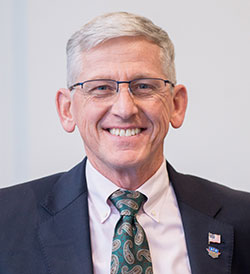 Tango’s musings:
Tango’s musings:
It’s been an interesting first quarter for us here in 2020. Due to COVID-19, I’ve been unable to travel to our favorite EW shows around the country. It turns out the shows were cancelled, anyway, not just my flights to get there. The gap continues to grow for information on how the community of interest is advancing the art and science of EMSO.
On a good note, it has been a privilege to stay home with my beautiful bride. After being gone about three weeks a month for 4 years, this transition has been calming and welcomed. She is a source of inspiration for me; she is so organized and motivated to keep our business running smoothly. She tells me often how happy she is to be forced to stay home. “It makes for great writing,” she says. I was hoping it was me… ?
Nevertheless, staying home means not meeting with you – our EW comrades – face to face. This makes it difficult to keep our fingers on the pulse of EW and EMSO. So, we have designed a short questionnaire to touch base with you and stay connected.
 CALL TO ACTION – Warrior Support Solutions, LLC Short Questionnaire
CALL TO ACTION – Warrior Support Solutions, LLC Short Questionnaire
One last thing: with the establishment of the Space Force, the online blog sites and trade journals are broadcasting a flurry of questions around fortifying satellite communications and defending them against attack. These questions are being asked now? As if the threat wasn’t there all along. Case in point: we attacked our own communications when we committed friendly fratricide with IED jamming in the mid 2000s. That is just a recent example. COMMS jamming has been going on for over 100 years: some of the first examples were used as far back as 1904 and every major world engagement since then has seen some form of COMMS Jamming. Just because the signals are now heading into and out of space doesn’t make them any more vulnerable or important. Nevertheless, WSS isn’t knocking this new fortune. If the questions are getting asked, then Congress may respond with rapid demands for that capability. Resources will be reorganized (much like the way the Cyber Domain reorganized priorities to defend against cyber-attacks, hacking, and data breaches) and money will be spent (finally) to fortify the network and assure access to the electromagnetic spectrum. JADC2 and ABMS need this capability, so let’s hope this momentum keeps going.
Warrior Support Solutions, LLC News to Cheer About
***EXTRA, EXTRA, Read All About It***
Warrior Support Solutions, LLC was personally invited to submit a paper for the Joint Air Power Competence Centre JAPCC 2020 Conference Read Ahead Booklet. We recently learned our paper was accepted. This is particularly distinctive for us because it demonstrates the global reach that WSS is establishing. In 2018, Melinda (call sign, Charlie) traveled to EW Europe to speak about the New C4 for Electronic Warfare. Now, Tango and Charlie will be traveling to Germany to speak on DoSD: Denial of Spectrum Denial, a sister topic to the New C4. Thank you to Mr. Dirk Smith, Landfall Research, for collaborating with us on this piece.
For more information on the conference, visit: 16th Joint Air & Space Power Conference

Hopefully, this situation with COVID-19 will be well behind us so that WSS can travel to Essen, Germany, in early October 2020 to speak at this conference.

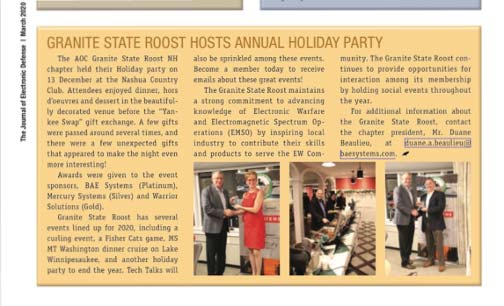 Melinda accepted a plaque for Warrior Support Solutions, LLC’s Gold-level sponsorship of the Granite State Roost Chapter of the Association of Old Crows. This news was featured in the March 2020 edition of the JED.
Melinda accepted a plaque for Warrior Support Solutions, LLC’s Gold-level sponsorship of the Granite State Roost Chapter of the Association of Old Crows. This news was featured in the March 2020 edition of the JED.
Tango Heads to the Front Lines during COVID-19 Crisis
Steve, “Tango” Tourangeau, Lt. Col, CAP, answered a call from the New Hampshire Civil Air Patrol wing commander to assist with ferrying medical supplies to hospitals around the state. Tango remains a patriot and a true officer, willing to serve.

It’s a Family Affair! Melinda and Steve have both submitted applications to the AOC Board to run for Northeast Director and At-Large Director, respectively.
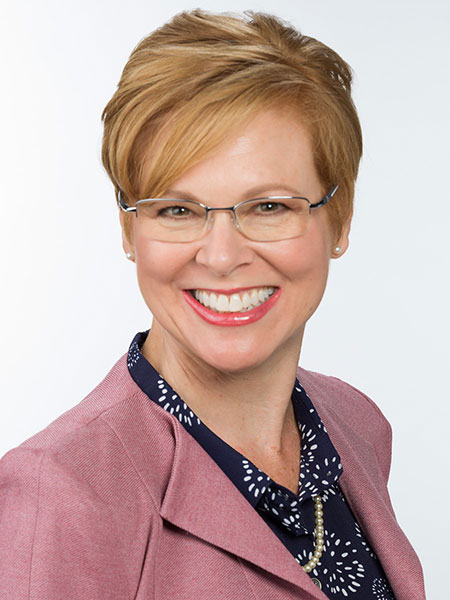
Melinda for Northeast Director
As an AOC board member, Mrs. Tourangeau will contribute her time and talent to help strategize and facilitate the AOC’s key initiatives in STEM, Education, Career and Professional Development, the JED, webinars, chapters and membership. She will devote her passion and advanced knowledge of EW systems to achieve goals set by the board and the AOC executive staff. Mrs. Tourangeau is a team player and works in concert with all board and executive members to collaborate, mediate, and find a solution that will work for everyone.
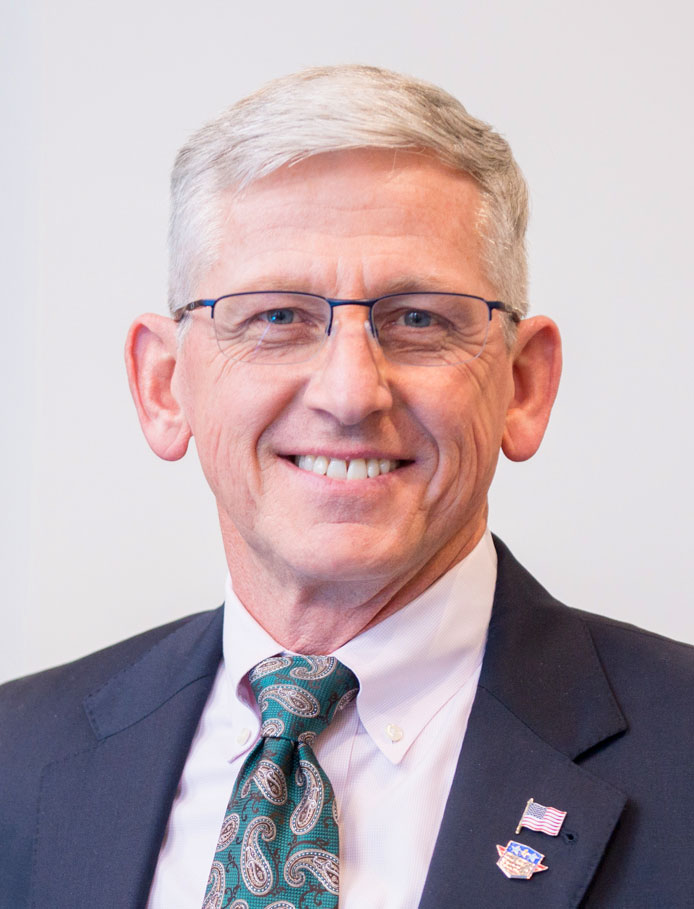
Steve for At-Large Director
As an AOC International Board member, Tango will continue to champion the criticality of EMS Operations in current and future conflicts and advocate for necessary capabilities for our warfighters. By improving communication, collaboration and coordination with all chapters and the general membership, the AOC will have tremendous influence on our future warfighters’ ability to dominate the EMS.
NOTE – As of the date of this newsletter the AOC has not yet released its slate of candidates for the 2020 elections. Hopefully you will see both our names on your ballots later this year.
Warrior Support Solutions, LLC – AT YOUR SERVICE
Did You Know? WSS performs EW/EMSO Research, Studies, and Analyses
WSS was recently asked to perform several key studies in electronic warfare and electromagnetic spectrum operations. We wanted to share some details about those requests with our readers, to inform you from a “different angle” about the goings-on in our Community of Interest.
- One study we were asked to do was to look into options for improving aircraft survivability. We designed an algorithm to predict a “survivability factor” for a platform based on key factors of an engagement. Our advanced knowledge of EW systems and of EW Test and Evaluation scenarios fortified the equation with real-life variables to build a table of cases representing realistic scenarios. We then conducted the study by modifying different variables in the algorithm to see if aircraft survivability could be improved. The improvement potential was based on available budget and whether or not similar improvements were being made elsewhere. It was a Win-Win for several entities: us, the DoD, industry, and taxpayers, as it avoided duplication of effort and leveraged economies of scale.
- Another study we did involved evaluating classic EW capabilities on a given family of platforms to see if there is any market potential to deploy an existing EW capability on a new platform. This existing EW capability was developed for one DoD Service, but the question they wanted answered was whether or not another DoD Service could use it.
- The third study we performed was to evaluate the efficacy of an underutilized range in New Mexico for use supporting EW/EMSO Testing and Training.
- The fourth effort was participation in a proposal effort for SOCOM’s AC/MC-130J RFCM OTA.
- And of course, last fall we completed an assessment of DoD EW capabilities for U.S. Congress in response to the 2019 NDAA. In that report, we concluded that capabilities in Joint EMBM and Live-Virtual-Constructive testing and training should be the highest priorities for DoD investment in EW/EMSO. Industry Note: Once the DoD congeals its efforts in managing EMSO, there may be some significant acquisition requests for technology and capabilities to enable these.
We’ve prepared a comprehensive listing of How Can We Help? services for all of our EW/EMSO community partners. We invite you to find the service that is right for you by visiting our website:
https://warriorss.com/how-can-we-help/
In addition, we have prepared a “broad spectrum” report on the 17 entities in the USAF that are performing EW/EMSO programs, training, and testing. Contact us to obtain your personalized report, customized with recommendations for introductions with key leaders in USAF EW.
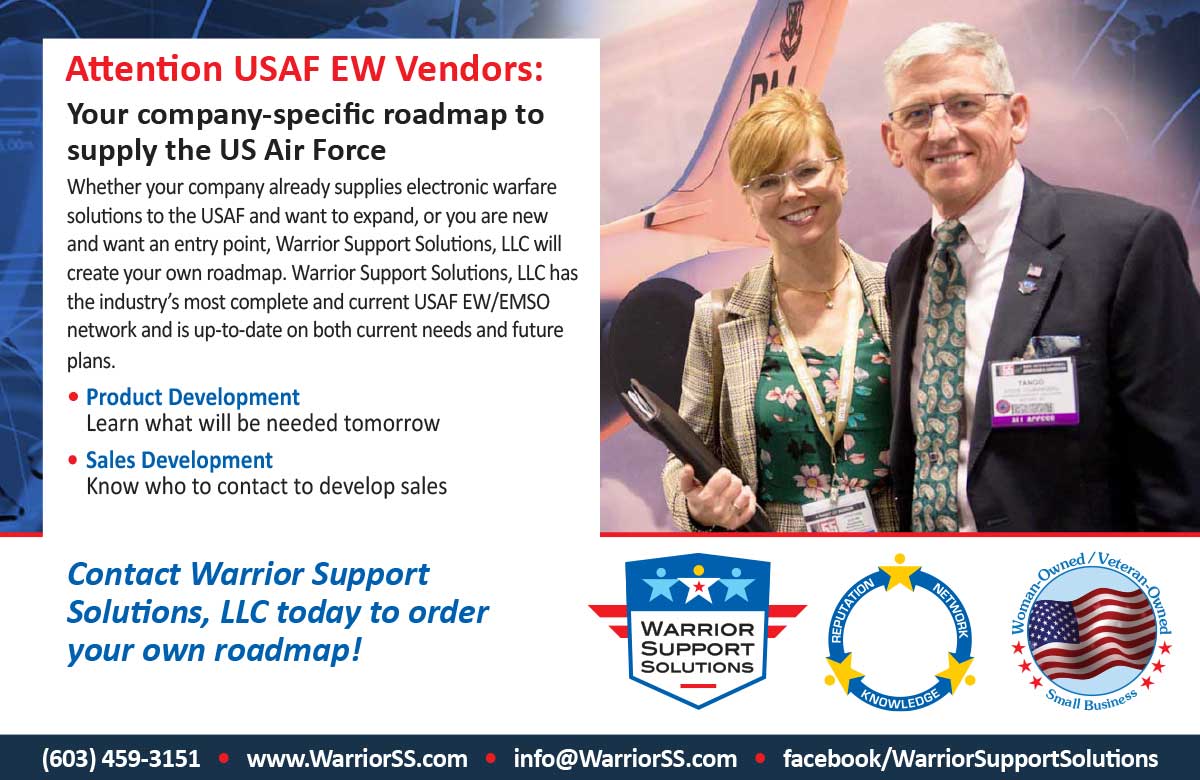

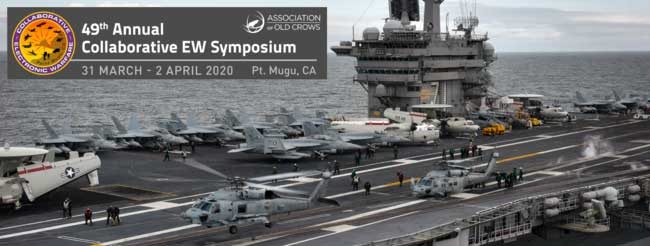 49th Annual EW Collaborative Symposium
49th Annual EW Collaborative Symposium 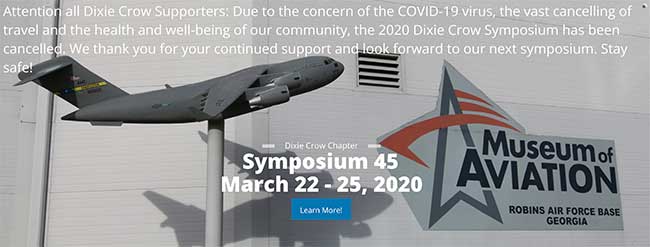 Dixie Crow Chapter Symposium 45
Dixie Crow Chapter Symposium 45